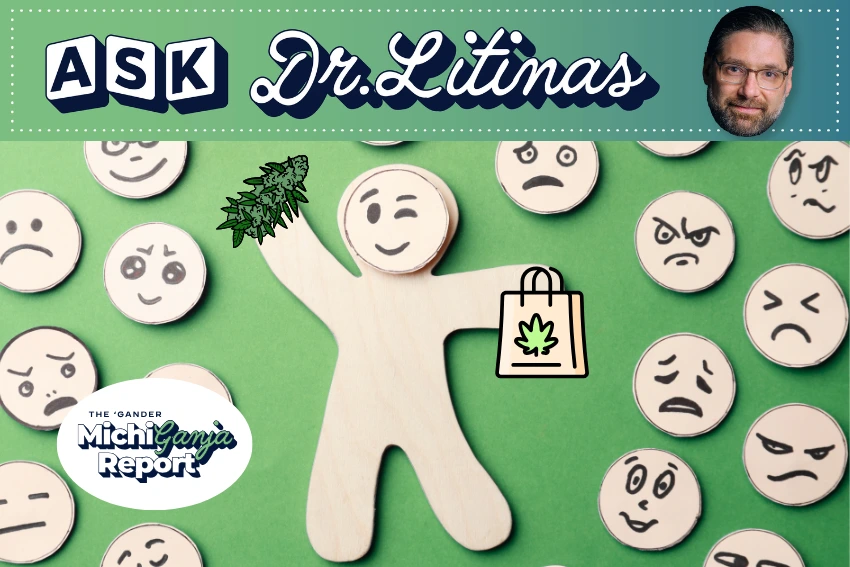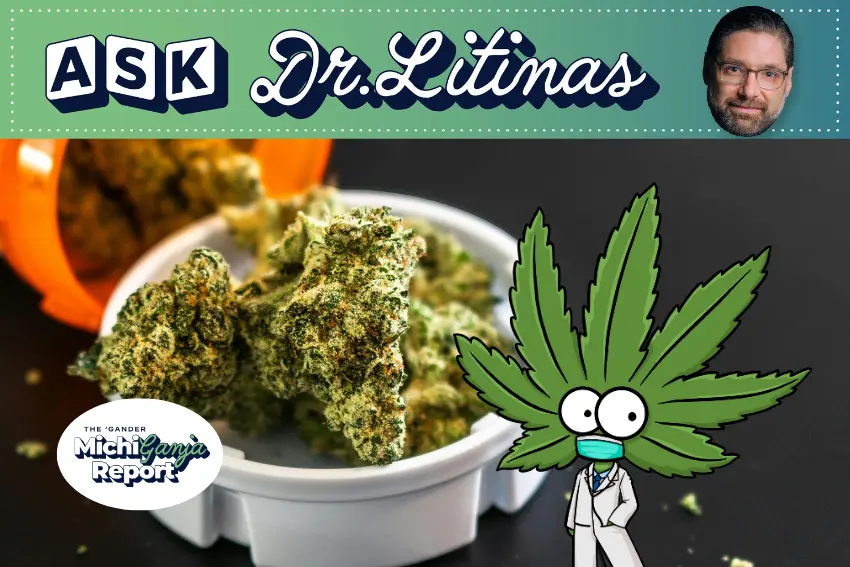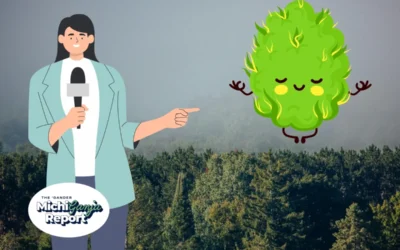
Ask Dr. Litinas is a column that publishes twice monthly as part of The MichiGanja Report—our free, weekly newsletter about all things marijuana. Click here to sign up.
This is the first installment in a five-part series. Click here to read the second part.
MICHIGAN—One of the most fascinating—and often overlooked—aspects of cannabis use is the idea of downstream effects. Put simply, downstream effects are the physical, mental, and emotional outcomes that unfold in the body after cannabis interacts with your system.
And these effects aren’t random. They’re shaped by a kind of chemical communication between cannabinoids and your body’s endocannabinoid system. When you introduce cannabinoids, you’re adding new “voices” to an ongoing biochemical dialogue. And by setting the initial conditions of that dialogue, you can help influence the direction of the conversation.
Here’s the key insight:
While you can’t fully control every outcome, you can shape the initial conditions. By making intentional choices about what cannabinoids you consume, how you take them, and how much you take, you set the stage for what happens next. Think of it less like flipping a switch and more like steering a river—you can guide the current, even if you can’t dictate every ripple.
Three parameters that matter
There are three main parameters you can adjust. Each one can impact downstream effects. By learning to work with them, you can better align your cannabis experience with your goals.
- Cannabinoid ratios: Different cannabinoids (like THC, CBD, and CBN) bring different properties to the table. THC alone produces a very different outcome than CBD alone, and combining them in ratios opens yet another spectrum of effects. By choosing products with particular cannabinoid profiles, you influence whether your downstream effects tilt toward relaxation, alertness, pain relief, or sleep support.
- Methods of administration: Smoking, vaping, edibles, tinctures—each method has its own onset time, intensity, and duration. Your choice here changes not only how quickly you feel effects, but also how they’re expressed downstream.
- Dosing and titration: Perhaps the most critical factor is dosage. Small changes can lead to very different experiences. “Start low and go slow” isn’t just a slogan. It’s how you keep downstream effects in a manageable, predictable range.
Predictability over precision
It’s important to be clear: this isn’t about precise control.
Cannabis remains a living conversation between plant chemistry and human biology, and no two bodies are identical. But by contouring those initial conditions—the what, how, and how much—you give yourself a strong idea of what to expect from the downstream effects.
Why it matters
Whether your goal is better sleep, relief from anxiety, or simply enjoying the experience, understanding this framework can turn cannabis use from guesswork into a more intentional practice. All it takes is noticing patterns in how your body reacts and learning from them.
And this is just the start. Over the next few weeks, we’ll be taking a closer look at each of these parameters—beginning with cannabinoid ratios—to better understand how adjusting the “what, how, and how much” can help you steer cannabis toward your goals.
This content is for education, not medical advice. Talk to your doctor before making any health decisions—especially when it comes to cannabis. Products are only for adults ages 21 and up.
READ MORE: Can cannabis actually help you sleep—or just make it worse?
Got a question about weed for Dr. Litinas? Send it in here. We’ll get you a response.

Want more cannabis news delivered right to your inbox? Click here to sign up for The MichiGanja Report—our free, weekly newsletter about all things marijuana.

8 quick hits of cannabis news from across Michigan
MICHIGAN—Cannabis is driving Michigan’s economy, fixing its roads, and helping its veterans. Meanwhile, some local municipalities are still...

4 Michigan-grown cannabis strains that are getting me through the holidays
From bright sativas to heavy indicas, these are the Michigan-grown strains helping me survive family gatherings, icy roads, and the holiday chaos....

14 weed gifts Michigan stoners will actually love
Need a gift for your favorite stoner? We tested dozens of cannabis products and found the ones actually worth giving. MICHIGAN—Holiday shopping for...

8 quick hits of cannabis news from across Michigan
MICHIGAN—It’s freezing outside but the cannabis headlines are still coming in hot. Here’s what went down over the last week: TAX TIME: A judge is...

What science says about how Michiganders should use cannabis for pain
Ask Dr. Litinas is a column that publishes twice monthly as part of The MichiGanja Report—our free, weekly newsletter about all things marijuana....





